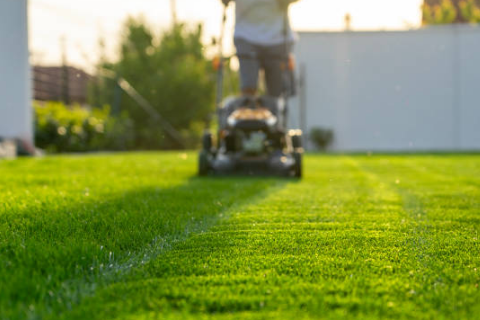Among landscaping tools, the string trimmer is one of the most versatile power tools you can own. But to get the most out of this handy machine, it’s important to know how to use it correctly—and safely. Also known as a weed eater, weed whacker, or line trimmer, this tool does far more than just cut down weeds. Start by choosing the right trimmer for your needs, then follow the tips below to trim, edge, and keep your yard looking sharp.
Choosing the Best String Trimmer
When shopping for a string trimmer, start by deciding whether you want a corded electric, battery-powered, or gas-powered model.
-
Corded electric trimmers are relatively quiet and offer strong, consistent power. Since they don’t produce exhaust, they’re cleaner to operate—and you never need to refuel. However, they require an extension cord, and you’ll need to be cautious not to trip over or accidentally cut the cord while working. Before buying, make sure your yard has enough accessible outlets for your trimming range.
-
Battery-powered trimmers are also quiet and eliminate the need for a cord. They run on rechargeable battery packs and are perfect for small yards or light-duty tasks. But if your lawn is large or overgrown, the battery may not last long enough to finish the job.
-
Gas-powered trimmers are the third option. These tend to be heavier and louder but offer more power and longer run times—making them a top choice for professionals and large properties. They’re ideal for tackling thick weeds or large areas, even though they require more maintenance.

How to Safely Operate a String Trimmer
Once you’ve selected the right trimmer, make sure to read and follow the user manual for your specific model. Before turning it on, cover any exposed skin—wear long sleeves, long pants, and closed-toe shoes to protect yourself from flying debris. It’s also a good idea to wear gardening gloves and safety glasses or sunglasses.
Using a String Trimmer Effectively
String trimmers spin either clockwise or counterclockwise. If your trimmer spins counterclockwise, it cuts best on the right side and throws debris to the left—ideal for right-handed users. If it spins clockwise, it cuts best on the left side and throws debris to the right—better suited for left-handed users.
As the trimmer head spins, a thin nylon string slices through vegetation. The string should extend about 6 inches from the head. For the best results, let the tip of the string do the cutting—using too much of the string’s length can overload the motor. Avoid hitting hard surfaces like rocks, fences, or walls, as this will wear down or break the string quickly.
Overall, using a string trimmer is pretty straightforward: maintain a steady grip and use smooth, controlled movements. With a bit of practice, you’ll get the hang of it in no time. Here are a few helpful techniques to keep your landscaping sharp and tidy:
Tapering
Use this technique to create a clean, angled cut along edges like driveways or curbs. Hold the trimmer at about a 45-degree angle, tilted toward the lawn’s edge, and maintain a consistent height. For best results, move in the direction that matches the trimmer’s spin—left for counterclockwise, right for clockwise.
Trimming
For areas the mower can’t reach—like around trees, flower beds, or fences—use the trimmer to cut the grass evenly. Hold the trimmer at about a 10-degree angle and sweep it side to side. Keep the cutting height uniform and move your body in one direction to avoid uneven patches or scalping the lawn.
Edging
To create a sharp division between different areas—such as between the lawn and sidewalk—hold the trimmer vertically so the string spins at a 90-degree angle to the ground. Start at one end and move in a straight line along the edge until you’re done.
Scything
This technique is best used with more powerful trimmers when you need to cut down tall grass or thick weeds across a larger area. Start by positioning the trimmer so the string hits the top third of the vegetation. Then, move the head in a sweeping, side-to-side motion. Once you finish the first layer, move down and repeat to clear the next section.
With the right trimmer and a bit of know-how, you can handle everything from simple yard clean-ups to larger landscaping jobs in no time. Keep safety in mind, practice your technique, and soon you’ll be trimming and edging like a pro.

